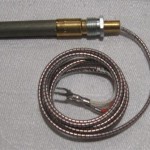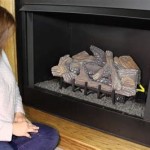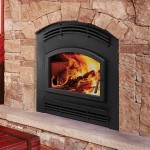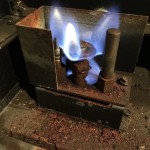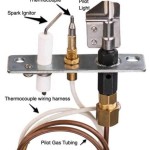Gas Fireplace Pilot Light Goes Out After A Few Minutes: Troubleshooting and Solutions
A gas fireplace offers a convenient and aesthetically pleasing heating solution for many homes. However, a common problem encountered is the pilot light extinguishing itself shortly after ignition. This issue can be frustrating, leaving homeowners without the desired warmth and ambiance. Addressing this problem effectively requires a systematic approach to identify the underlying cause and implement the appropriate solution.
Several factors can contribute to a pilot light that refuses to stay lit. These issues range from simple obstructions to more complex gas supply or component malfunctions. A thorough understanding of the potential causes is essential for accurate diagnosis and efficient repair. Ignoring this issue can lead to safety risks and negate the advantages of having a gas fireplace.
Thermocouple or Thermopile Malfunction
The thermocouple or thermopile is a key safety component in a gas fireplace. Its primary function is to sense the presence of the pilot light flame. When the pilot light is lit, the flame heats the thermocouple, generating a small electrical current. This current, in turn, keeps the gas valve open, allowing gas to flow to the main burner. If the thermocouple fails to produce sufficient current, the gas valve will close automatically, extinguishing both the pilot light and the main burner.
Several factors can cause thermocouple failure. Over time, the thermocouple can become corroded or damaged by the constant heat exposure. Soot buildup on the thermocouple can also insulate it, preventing it from reaching the required temperature to generate the necessary electrical current. A loose connection between the thermocouple and the gas valve can also interrupt the electrical circuit, causing the pilot light to go out. Testing the thermocouple requires a multimeter to measure the millivolt output. A reading below the manufacturer's specified range indicates the need for replacement. Cleaning the thermocouple with a fine-grade steel wool can sometimes resolve the issue if soot buildup is the cause.
The thermopile, a more robust version of the thermocouple, generates more voltage and is often used in fireplaces with remote controls or electronic ignition systems. The same principles apply to the thermopile; a weak or malfunctioning thermopile will prevent the main gas valve from opening and can cause the pilot light to extinguish. Regular inspection and cleaning are crucial for maintaining the thermocouple or thermopile's functionality.
Gas Supply Issues
An inadequate gas supply can also lead to a pilot light that cannot sustain itself. Low gas pressure, a blocked gas line, or a faulty gas regulator can restrict the flow of gas to the pilot light, causing it to flicker and eventually extinguish. Identifying gas supply problems requires careful observation and, in some cases, professional assistance.
Check the main gas valve to ensure it is fully open. Examine the gas line for any visible kinks or obstructions. If the gas line runs through a crawl space or attic, inspect it for damage or leaks. A gas leak can reduce the gas pressure available to the fireplace and create a hazardous situation. Contact a qualified gas technician immediately if any gas leaks are suspected.
Gas regulators are designed to maintain a consistent gas pressure. A malfunctioning regulator can cause pressure fluctuations, leading to an intermittent gas supply to the pilot light. Testing the gas pressure requires specialized equipment and should be performed by a licensed gas technician. In some cases, the gas meter itself may be faulty, requiring replacement by the gas company.
Dirty Pilot Light Orifice
The pilot light orifice is a small opening that regulates the flow of gas to the pilot light. Over time, this orifice can become clogged with dust, debris, or carbon deposits. A partially blocked orifice restricts the gas flow, resulting in a weak or unstable pilot light flame that eventually extinguishes.
Cleaning the pilot light orifice requires careful disassembly of the pilot light assembly. Before disassembling any gas appliance, ensure the gas supply is shut off. Use a small wire or pin to gently clear any obstructions from the orifice. Avoid using excessively large objects, as this could damage the orifice. Compressed air can also be used to blow out any remaining debris. After cleaning, reassemble the pilot light assembly and carefully check for any gas leaks using a soap and water solution.
Regular cleaning of the pilot light orifice is essential for maintaining a stable and reliable pilot light flame. The frequency of cleaning depends on factors such as the age of the fireplace, the quality of the gas supply, and the amount of usage. Performing this cleaning annually can prevent pilot light issues.
The problem of a gas fireplace pilot light going out after a few minutes is a complex issue with multiple potential causes. Addressing the thermocouple or thermopile malfunction, gas supply issues, and a dirty pilot light orifice are all crucial steps in troubleshooting and resolving this issue effectively. If the troubleshooting steps do not correct the issue, contacting a qualified gas fireplace technician is recommended. A qualified technician has the necessary expertise to diagnose and repair the appliance safely and effectively.

Gas Fireplace Keeps Shutting Off Here S What You Can Do

Gas Fireplace Keeps Shutting Off Here S What You Can Do

Why Your Pilot Light Keeps Going Out How To Fix With S

Why Would A Pilot Light Go Out Dreifuss Fireplaces
Is It Okay If My Pilot Light Therma Coupler Red Hot When Having The On A Gas Fireplace Quora
My Gas Fireplace Pilot Light Works Perfectly However When I Flip The Switch For Rest Of To Turn On Nothing Happens What Quora

Why Your Pilot Light Keeps Going Out How To Fix With S

How To Fix A Gas Fireplace Pilot Light That Does Not Stay Lit Troubleshooting And Repairing

Why Your Gas Fireplace Won T Light And How To Fix It
How Often Do Pilot Lights Go Out And Why Does It Happen Quora
Related Posts

